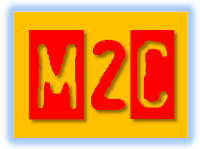Such paranoia is a good example of how members (and employees) of a citation cartel think and operate. The credentialed class all too often take personal offense to differences of opinion, resort to academic bullying, and employ censorship to protect their intellectual cartels.
I personally like every LDS scholar I’ve met, regardless of any disagreements I have with them over specific issues. They’re all great people. I don’t take such disagreements personally and I’m always eager to change my mind when presented with better, more complete facts and logical arguments.
Furthermore, I respect everyone who engages in discussions about LDS issues, regardless of their point of view or agenda.
My objection to the M2C citation cartel is based on their ongoing censorship of alternative ideas, perspectives, and approaches to the issues. Their censorship represents an intellectual elitism that I consider indefensible and counterproductive, but it is hardly unique to M2C (see below). And, more importantly, that doesn’t mean the members of the cartel are not smart, faithful, thoughtful, and awesome people.
_____
For branding, M2C is important to help readers know the editorial bias of a particular publication or article.
No one who reads BYU Studies, for example, should be unaware of the editors’ bias in favor of M2C. Only readers who understand the M2C bias can make a fair assessment of the credibility and reliability of the publication.

It’s the same with the Saints books. Readers who are unaware of the bias of the editors in favor of accommodating M2C will not recognize, let alone understand, the censorship of references to Cumorah.
“These so-called citation cartels have been around for decades, as the publishing consultant Phil Davis has pointed out. Thomson Reuters, which until recently owned the Impact Factor for ranking journals, has even sanctioned periodicals for evidence of cartel behavior…. For authors, the payoff is clear: The more citations your articles generate, the more influential they appear. And journals have similar incentives: Encourage authors to cite papers that appear in your pages and you’ve created the illusion that your journal is highly influential.”
https://www.statnews.com/2017/01/13/citation-cartels-science/
“In this perspective, our goal is to present and elucidate a thus far largely overlooked problem that is arising in scientific publishing, namely the identification and discovery of citation cartels in citation networks. Taking from the well-known definition of a community in the realm of network science, namely that people within a community share significantly more links with each other as they do outside of this community, we propose that citation cartels are defined as groups of authors that cite each other disproportionately more than they do other groups of authors that work on the same subject.”
https://www.frontiersin.org/articles/10.3389/fphy.2016.00049/full
Source: About Central America




2 thoughts on “The M2C citation cartel endures”
It would be beneficial if M2C advocates read your blog Jonathan, perhaps at some point in time your influence and the truth about what the prophets and apostles have taught concerning the Book of Mormon and it’s testimony of where the promised land is will help them have a change of heart.
It is bewildering to me with all the evidence, in all its forms from scriptural, revelatory, archeological, the law of Moses and especially what the prophets have taught, that there is still any member of the church that can believe that the hill Cumorah is south of the border and not in upper state New York. All evidences of the promised land point directly to the Untied States of America, without question.
Confirmation bias is certainly deeply rooted in those that ‘think they are wise’.
Thank you for your work!
Good points. Confirmation bias is far too powerful for our M2C friends to overcome. Plus, many have invested careers, time and money into promoting M2C. Imagine teaching M2C to thousands of BYU or CES students. It is psychologically impossible for them to change their minds. And that’s fine. I’m just interested in giving people an option once they realize that M2C constitutes a repudiation of the teachings of the prophets.
Comments are closed.